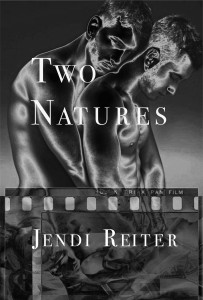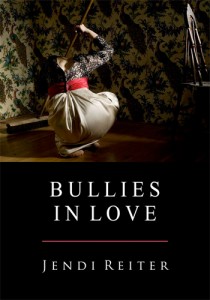More great reviews have come in since Two Natures debuted last week. I’m honored when readers say that I did justice to the real-life experience of gay men and their loved ones during the AIDS crisis. When other people make an emotional connection with characters who previously existed only in my mind, something magical happens, like the scene in the play Peter Pan when the collective strength of the audience’s chant “I do believe in fairies!” brings Tinkerbell to life.
On Goodreads, reviewer Nocturnalux gave thoughtful attention to the book’s literary devices and philosophical dichotomies:
The story of Julian, a young fashion photographer trying to make it in the fast and furious 90’s New York environment, is not simply the vehicle through which gay rights, religious issues, the AIDS epidemic, family breakdown and queer identity are addressed: by immersing the reader fully into its well developed world, the novel conveys all this and so much in an organic manner.
This immersive quality is achieved in part thanks to a very apt usage of the first person narrative. As a photographer Julian employs highly image saturated language to frame his experiences, in a most literal sense. Visual intense descriptions punctuate the story and is the lenses through which the storytelling process happens. But these also serve to show a sense of alienation from the actual world, a pressing anxiety that haunts Julian.
The narrator’s repressive, traditional Christian upbringing also factors in his means of expression, with many biblical references strewed very liberally throughout the entire novel, to the point of the title, as it has already been mentioned. The biblical imagery covers a gamut of tones, from lyrical, pensive and musing to snarky and highly cynical…
…Two Natures is in all respects very honest. It does not shy from being graphic, painful, at times horrifying, often moving, all without caring for niceties. The comprehensive scope of the endeavor has its own artistic vision, both in-universe- Julian strives to capture some form of beauty- and at a structural level as the novel is almost flawless in how it harnesses highly personal moments to turn into literature.
Ultimately, Two Natures questions the very notion of ‘either/or’ system: perhaps there is a way of sublimating truth into beauty, or vice-verse, and reach an integrated way of feeling in which one can be true to oneself and still find actual love. There are no guarantees but the mere possibility is enough.
Meredith King at the M/M review blog Diverse Reader provided an enthusiastic release day review and promo post. Leave a blog comment or tweet about the giveaway for a chance to win a free e-book review copy.
Talk about a debut novel that grabs you, bleeds you, and makes you cry until you’re raw. It’s one of those books that when it ends you realize you stopped breathing. This is not an easy read. The subject matter is very heavy and the author really thrusts you into the gritty.
Many of us remember the early 90’s and how AIDS was actually vocal. Yes, it had been around for years before but it wasn’t really until the 90’s that people talked about it. Many people suffered and died because of this virus. This book not only addresses AIDS and that time period but you are gutted at the loss of one character because of the virus. That is the only warning you’re getting about the seriousness and emotional upheaval in this book.
This tale is close to 400 pages long but it flowed. Pacing was terrific and the characters were fleshed out nicely.
Gay novelist Hans M. Hirschi belongs to the same generation as Julian and me. His positive response to the book was very meaningful. Hirschi is a literary writer with crossover appeal to the M/M romance market, as I hope to be. His books have romantic subplots where love generally prevails, but also tackle serious issues such as bereavement, child abuse and trafficking, spirituality, and the obstacles faced by nontraditional families. I recommend his novel The Opera House, which is so far the only book I’ve read that reflects my experience with mental health stigma as a prospective adoptive parent. Some highlights from his review:
First things first: the writing is astonishing. Not really a surprise from an award winning writer, but still. It deserves to be said, as poetry and prose are two kinds of animals. Ms Reiter does an amazing job at describing the era, the early 1990s, the locales, mainly Manhattan, the politics of the Clinton and Giuliani era (seems history has a way of repeating itself…), and the fashion and publishing industry of the time. The characters become alive almost instantly, and I got to follow along the path of Julian Selkirk, the ‘hero’ of the story, as he tries to build a career for himself as a fashion photographer in New York. Work, life, sex, love, death. It’s all there, deliciously described…
…Without going into details about the plot, the two main romantic or love interests of Julian, Peter and Phil are painted in equally realistic colors. Both men flawed, but lovable. No, this is no romance novel, despite the romantic thread that permeates the pages. In fact, the mere mention of “open relationship” might send some readers of such novels screaming for the nearest therapy couch. Yet it is exactly the honesty, the unbridled truth told in Two Natures that makes this book so amazing. In fact, for all I know, Julian Selkirk is just a pseudonym for a real gay man living in New York in his mid-forties, married, no kids. I am deeply indebted to Ms Reiter for writing “our” story, the story of gay men growing of age in the nineties so honestly, so candidly.
As painful as it may be to remember some aspects of it, as hopeful is the picture she skillfully paints, and as we leave Julian on the floor of GalaxyCon, there is hope for the future. And as we all know, that hope has largely been fulfilled in the twenty years since, albeit loads of work still remains. Two Natures is an exquisite work of art, beautiful literary writing that enriches the LGBT section of any book store and Kindle, and it adds a beautiful facet to the mosaic of LGBT life past.
Who knows, perhaps writing can change reality, after all? Readers, if you see Julian walking around New York sometime, give him a big kiss from me. He saved my life.




